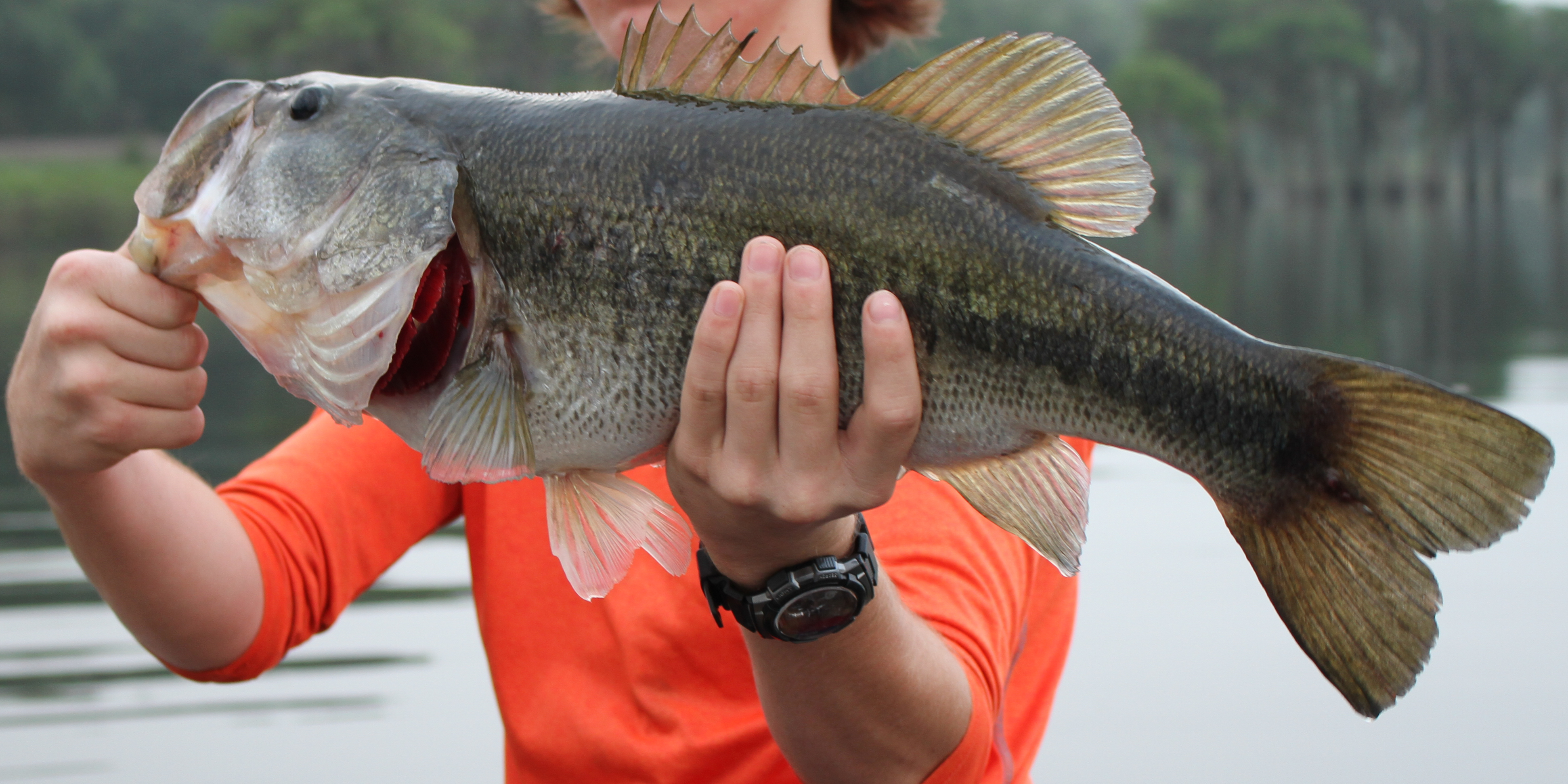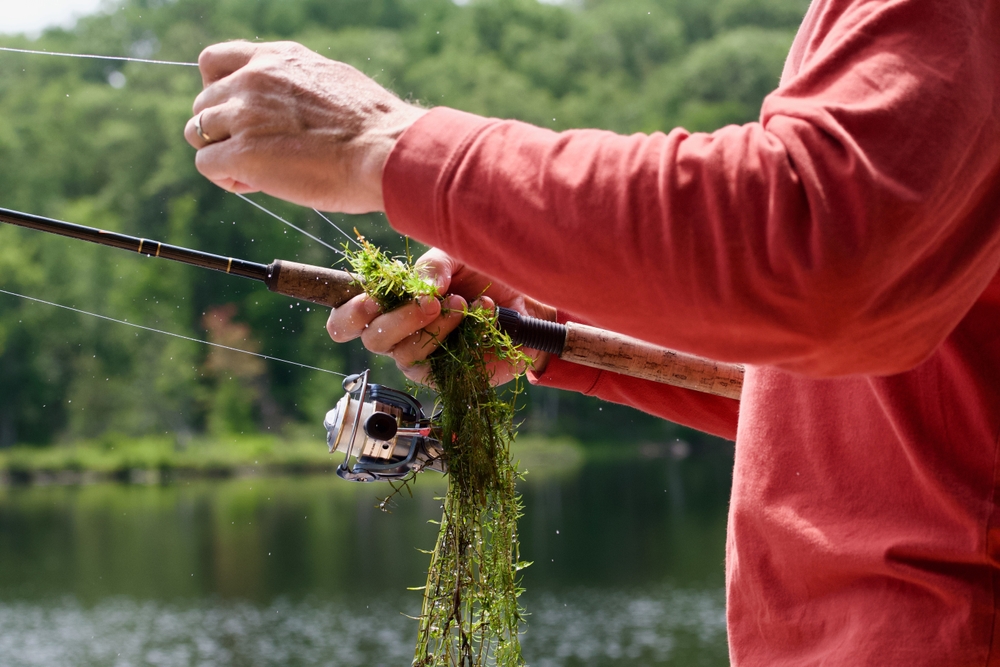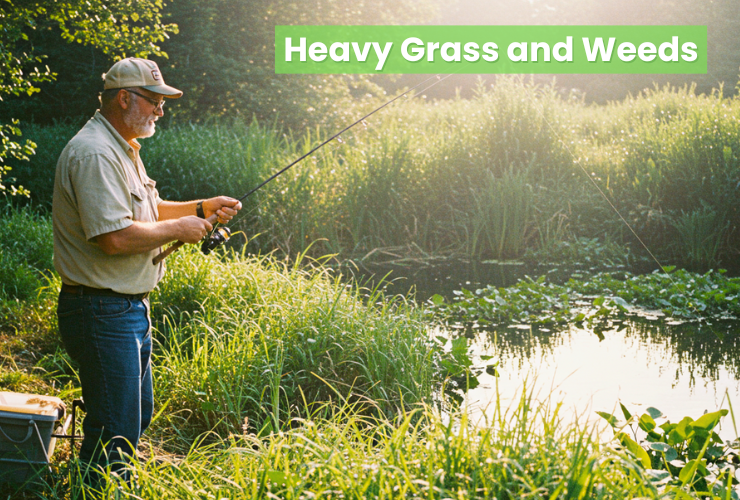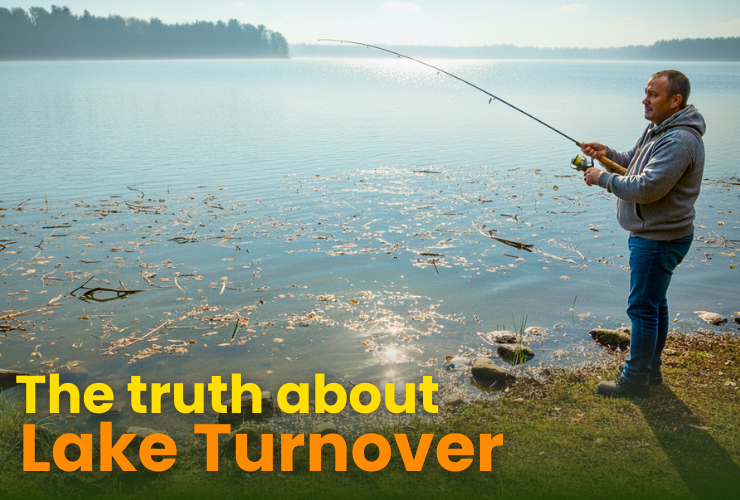12 Amazing Fishing Hacks for Your Next Big Catch
With the insane amount of products on the market, you might think that you’re just one smart purchase away from completely revolutionizing your fishing abilities. You’re not stuck pulling old-timer tricks to increase your effectiveness and catch bigger fish, right?
Well, if that’s how you look at it, you’re missing out. You're also wasting a ton of money.
Fishing is an extremely complex hobby, and it’s fairly expensive when you really get bass fever. So, just purchasing as much random stuff as possible isn’t going to give you the golden ticket, and it’ll probably just make you go broke.
Luckily, we’ve got 12 amazing fishing hacks that will help solve both those problems. We’ve got hacks for extremely niche uses, money saving hacks, and a few other things you might not have thought about.
Newsletter Signup
1: Electrical Tape for Braided Spinners
Our first hack is an extremely easy way to solve a niche problem, but it’s also extremely cheap and easy. So, it nails both our main categories.
If you’ve been fishing for any real length of time, you know how popular braided line is. That’s for a good reason. It doesn’t stretch, it’s resistant to fraying, and it can typically handle a lot more weight than any other fishing line of the same diameter. That allows you to toss a ton of it on a spool for extra-long casts, deep jigging, and more without sacrificing strength or overfilling your spool.
There is a problem with braided line, though. It tends to slip.
On a baitcaster, this usually isn’t much of a problem. The spools are usually textured, and most baitcaster spools have the line tied through the spool itself. So, slipping isn’t a problem for modern versions of a casting reel. However, it’s a big problem for spinning reels.
Braided line is so slippery that once you tie it onto the spool, it can be a pain to reel it up to max until you’ve got several feet of it wound up. Then, if you do any long casts or deep water jigging, you end up having problems reeling it in. It doesn’t grip the spool well.
All you have to do to fix this is cut a piece of electrical tape that is long enough to wrap around your bare spool. The rubbery texture of the tape’s non-stick surface will grip the line, and even if you get “spooled” by a big bass, you’ll be able to get the line started when it’s time to reel it in.
2: Guide Repairs on the Fly
Guides break when you’re fishing. It’s unavoidable, and someday, it’ll mess up one of your fishing trips. Either a guide will finally snap off after years of being stressed, or the line you’re using will eventually cut right through one of them. In either situation, you can’t cast, and you can’t do much else. It’s time to go home.
However, there is a way to make a quick field repair that might not be ideal, but it will allow you to get a few more hours of high-quality fishing in.
Make sure you keep a safety pin and some Gorilla tape in your tackle box. When you suddenly have a guide pop off, bend the safety pin so the circle that the needlepoint inserts into is pointing out like a guide. Wrap the rest with tape to your rod, and you’ve got a makeshift guide that saves your fishing trip.
Granted, you will not get the same performance out of your rod this way. As much as we’d love to say that you’ll get the same casting distance and smoothness, a simple safety pin is not going to perform as well as a true guide, and you will feel its effect on the rod’s performance. However, it will allow you to keep fishing.
Keep in mind that we recommended Gorilla tape. That’s because it’s the strongest tape we know of, but if you have something better, try it. The better the tape, the longer your makeshift guide will last.
This isn’t a long-term solution. You should do a proper guide replacement when you get home, but if it keeps you on the water, it’s good enough in our book.
3: Save Your Baitcaster and Land the Fish
All of us who have used baitcasters have experienced this one, and it is one of the worst feelings in the world. Some of you are probably highly advanced fishermen who don’t get your line in a nest anymore, but those who are just getting started with casting definitely know what we’re talking about. Sometimes, you finally cast your lure without jumbling up your line, but during the fight to get it in, you get a bird’s nest.
In a lot of situations, anglers call it a loss and cut their line. You don’t have to, though.
If you push down on the spool and turn the handle a half turn, the line will usually correct itself, and the bass on the other end will take care of putting tension on it.
This is a lot easier than manually fixing your line, and it will save you a lot of fish when you’re just starting to get used to casting equipment.
4: Save on Braid
Braided line is a favorite among anglers around the world. It’s tough as nails, floats, and can pack a ton of strength into a small diameter line. However, all those benefits come with one major drawback; braided line is expensive.
You can buy three or fine nice rolls of mono line for the price of a decent braided line roll, and every bit snipped off and thrown away is the money going right down the drain.
Some anglers use a leader that takes the majority of the abuse, but eventually, you look down, and your braid looks like it’s falling apart.
Don’t toss it in the bin yet.
Just unspool the line, keep it tidy, and spool it up on the opposite side. The exposed side of the line gets worn out running through guides and into fish mouths, but the side facing the spool is usually in great condition. You can double the value of your investment with this one.
5: Chicken Livers, Doughs, and Other Baits in Pantyhose
For bass, this is going to be extremely niche. However, catfishermen will absolutely love this one because it applies to most of their baits.
When you’re using baits that fall apart or dissolve in the water, wrap them in a mesh before you cast them out. The mesh won’t prevent dissolvable baits from slowly breaking apart, but it will help keep them together longer.
They make bait keepers specifically for this, but the pantyhose out of your significant other's drawer will work just fine, or you can pick up a pack of new ones for far less than the bait shop is charging.
6: Get a Cutterz
Few things highlight a fishing trip more than the insufferable taste of pond water and plastic in your mouth. Believe it or not, a lot of anglers still tear their smile up by gnawing through their line to avoid grabbing their fishing pliers or pocket knife every time they’re forced to re-tie.
Well, you really don’t need to do that.
Sure, there are fishing pliers that attach to your vest or belt loop for easy access, and there are special cutting tools on bungee cords you can connect to your kit, but there’s a better way to cut your line without having to fiddle around with your hands. Buy a Cutterz.
Cutterz is a brand of ring targeted at fishermen, and they have two blades shaped in a V pattern to let you cut the line with a swipe of your finger. It’s fast and easy, and you don’t risk dropping your gear while you fiddle around with tools.
7: Hydrogen Peroxide
So, you’ve just filled up a minnow bucket, and you’re ready to start a great day of fishing. You’re on the water for two hours, and your lively beautiful bait is now a bunch of floaters. There’s nothing you can do, right?
Well, you can prevent that.
Your live bait dies because of a lack of oxygen in the water. A lot of anglers have live wells with built-in aerators, but if you’re a bank fisherman with a bucket, just add a couple of tablespoons of hydrogen peroxide to the water. It naturally adds oxygen to the water and keeps your bait alive longer.
8: Organize Cheaply
You might be tempted to buy forty different tackle boxes with tons of organization shelves to hold all your precious lures, but that’s just a ton of money you’re using to store lures instead of picking up new rods, reels, and fishing snacks.
Instead, buy a bunch of freezer bags. You can use them for all your soft plastics. They’ll save space, preserve the lures, and pack into the large compartment of your tacklebox a lot better than the normal packaging. This is extremely cheap storage, and it saves a lot of space, too.
9: Vacuum Seal Baits and Attractants
Have you ever purchased a fancy fish attractant or nice commercial bait that smells horrendous but works great, and then you go to get it out of your tackle box a month later, and it lost all of its scents?
Invest in a vacuum sealer and seal those items after you’ve opened them. They’ll work as well as they did on the day you bought them, even if you don’t use them for months. You can also use this to make and seal your own homemade baits from minnows and shad that died in the bucket or oddball things around the kitchen.
10: Bring a Nail File
Sharp hooks are important if you actually want to catch fish. Dull ones can pop out, not penetrate when they need to, and just generally fail to work. This is especially true with bass and other big fish that might require a bit of “oomph” to set the hook.
There are a number of commercial hook sharpeners available, and we do recommend getting one eventually, but you can just use a nail file until then. A few quick swipes and your hooks will sink deep every time you yank your rod.
11: Hook Organization
Fiddling with hooks all day has two major drawbacks.
First, you’re wasting time. We all only get so much fishing time, and that’s an unfortunate fact of life. If you’re spending minutes going through your tackle box for the right hook, you’re not fishing.
Then, you have to consider how different hooks affect the presentation of lures. For example, have you tried to put a small worm hook on an 8-inch trick worm? The bass hardly ever gets up to the embedded hook and you lose them every time.
Fix both of these problems with some safety pins and stick-on labels.
Take all your hooks of one size and design, slip them on a safety pin, and label them with the size and style. When you need a specific hook, you know exactly where to look.
12: Big Weight Searching
Finally, we’ll wrap this up with one tip that bank fishermen are sure to get some use out of. It can be used from a boat but considering most modern boats have some sort of fish detection capability, it’s less relevant to that audience.
When you get to a muddy spot you haven’t really fished, or maybe some recent storms have shifted what the bottom is like by adding new debris, but you don’t have a castable detection system, tied on a larger weight.
You might not use the larger weights too much for bass fishing, but you can use them to get a fairly accurate readout of the bottom via the vibrations you pick up on the line. You likely do this anyways with your lures as you fish, but taking a minute to scout out the water quickly with a 1-ounce or larger weight can help you out dramatically.
For more fishing tips and resources, check out Bass Forecast fishing app.










.png)
.png)